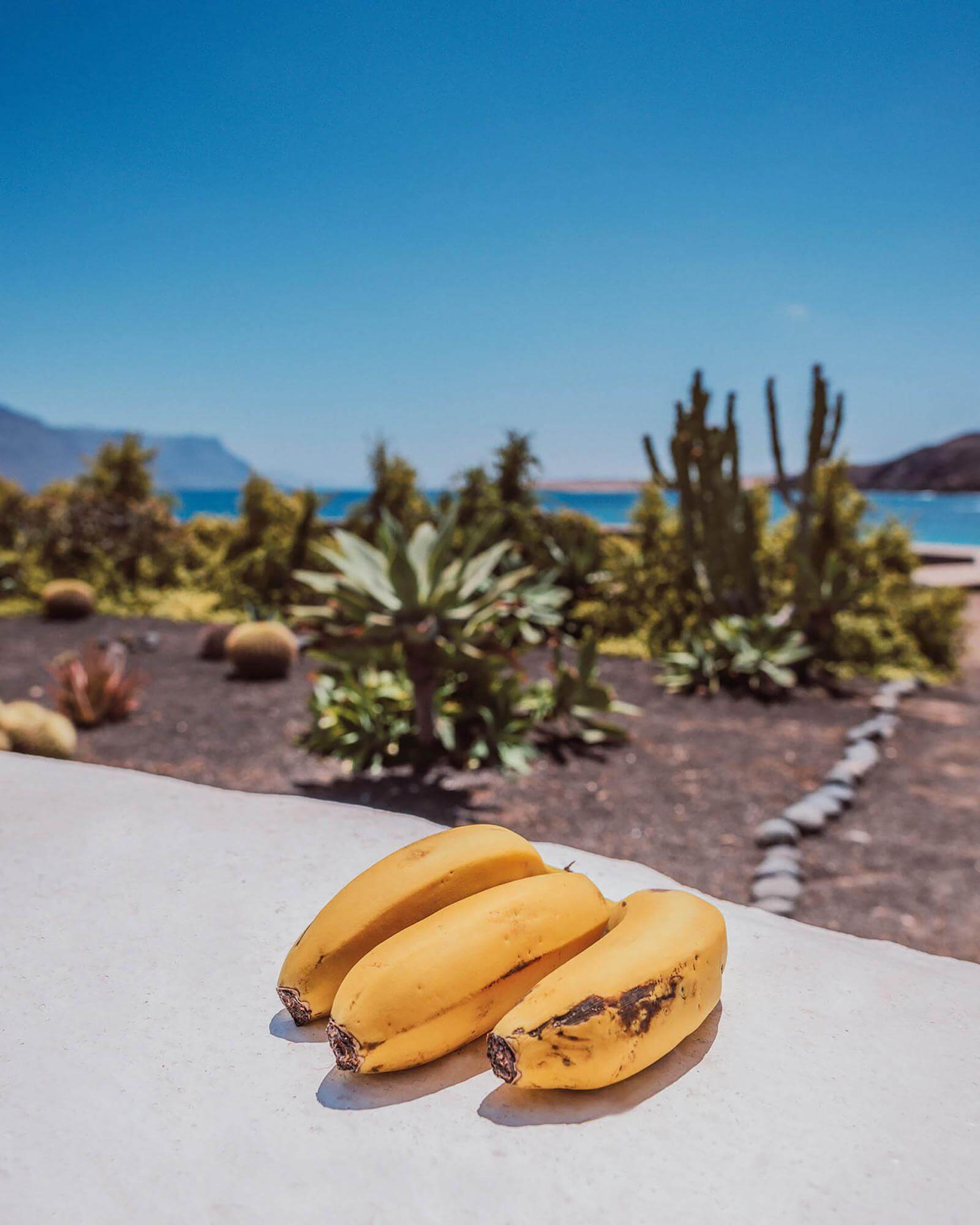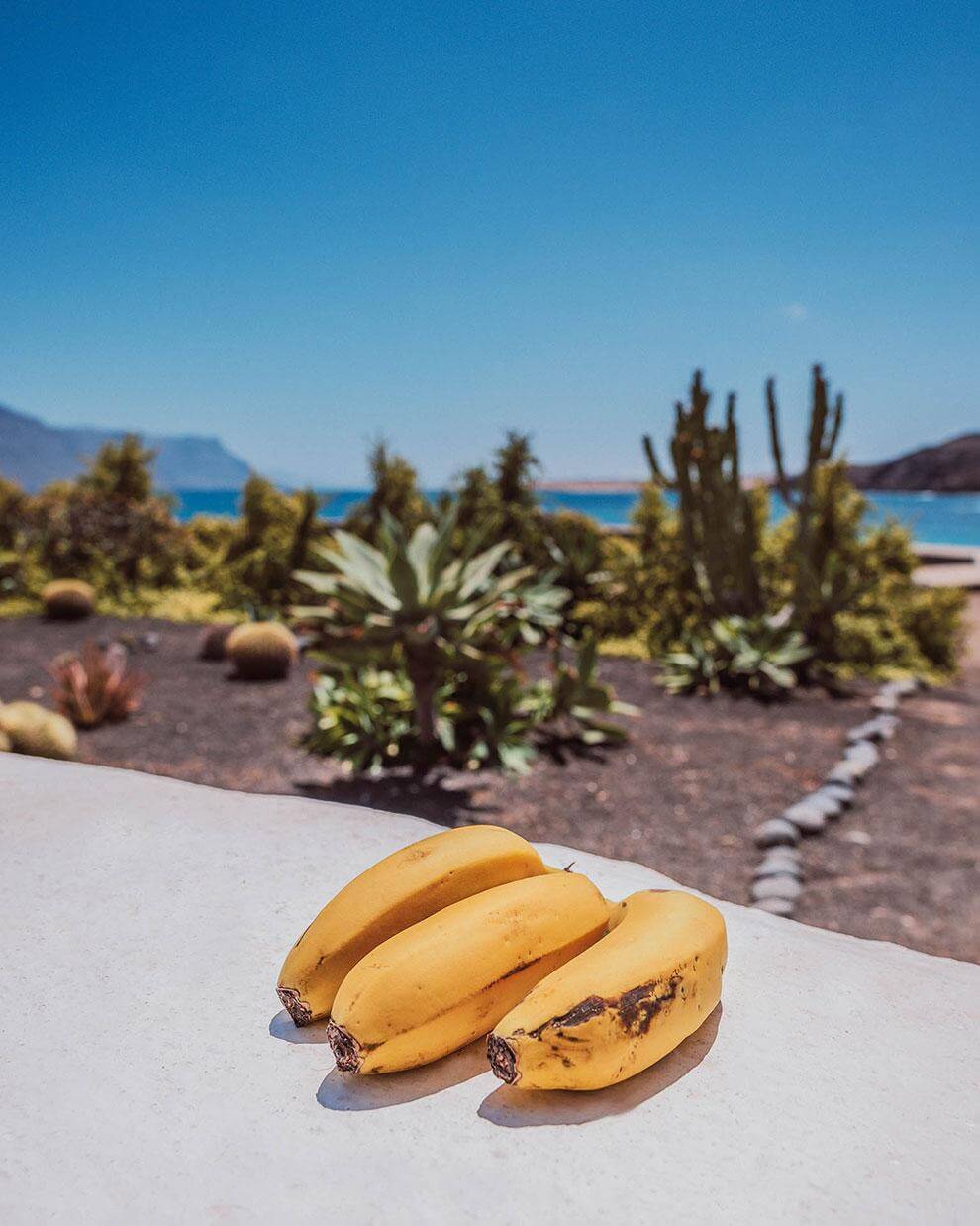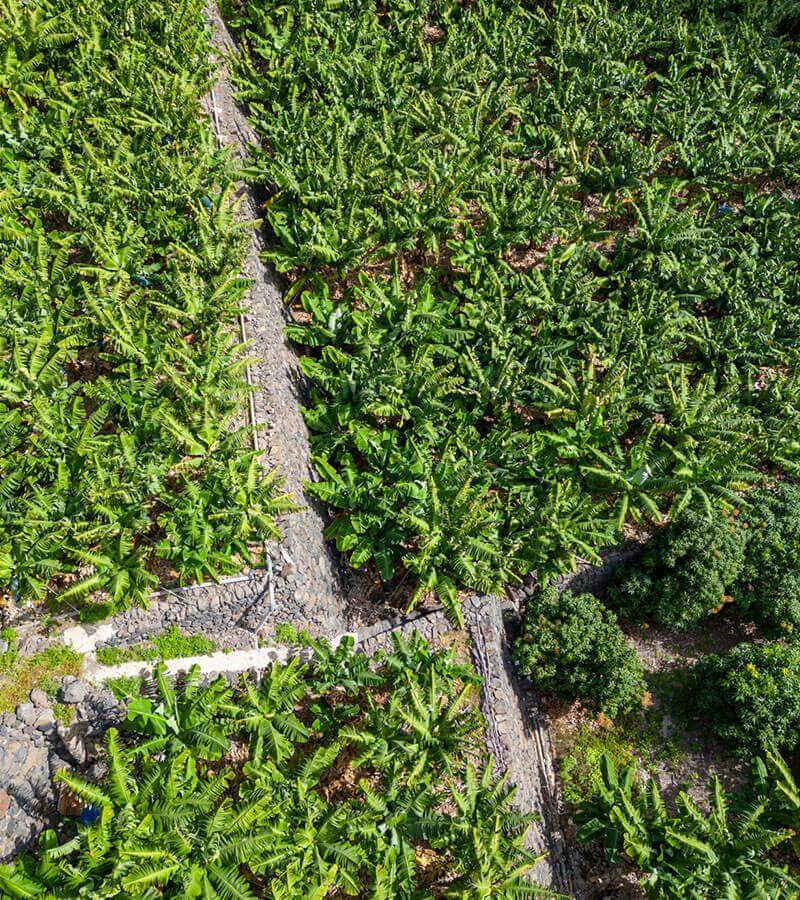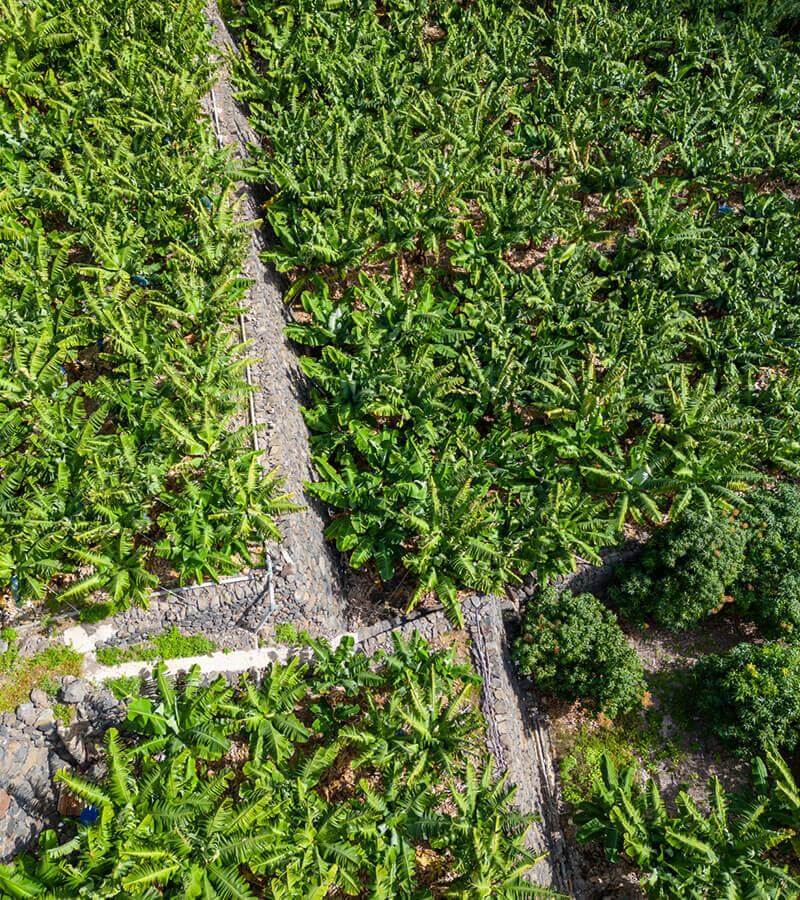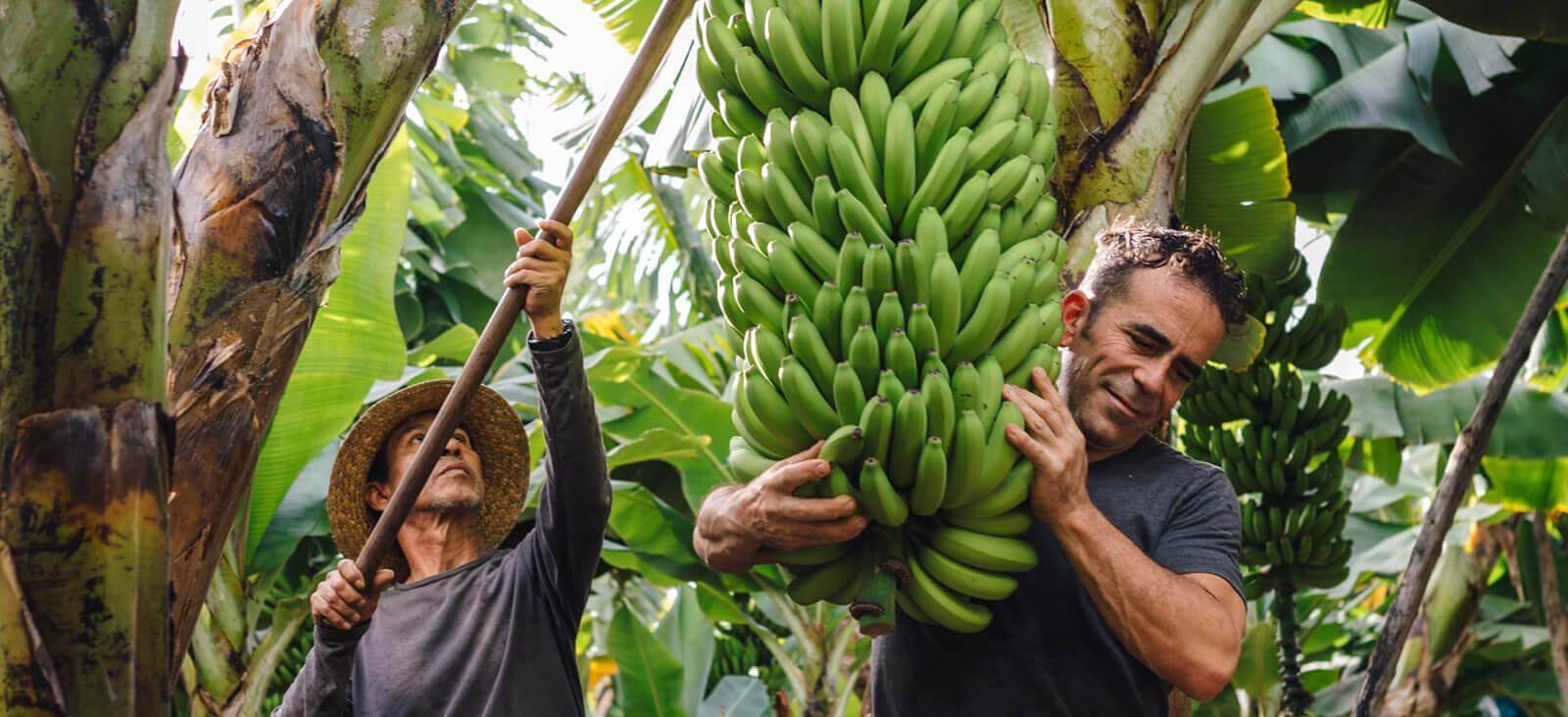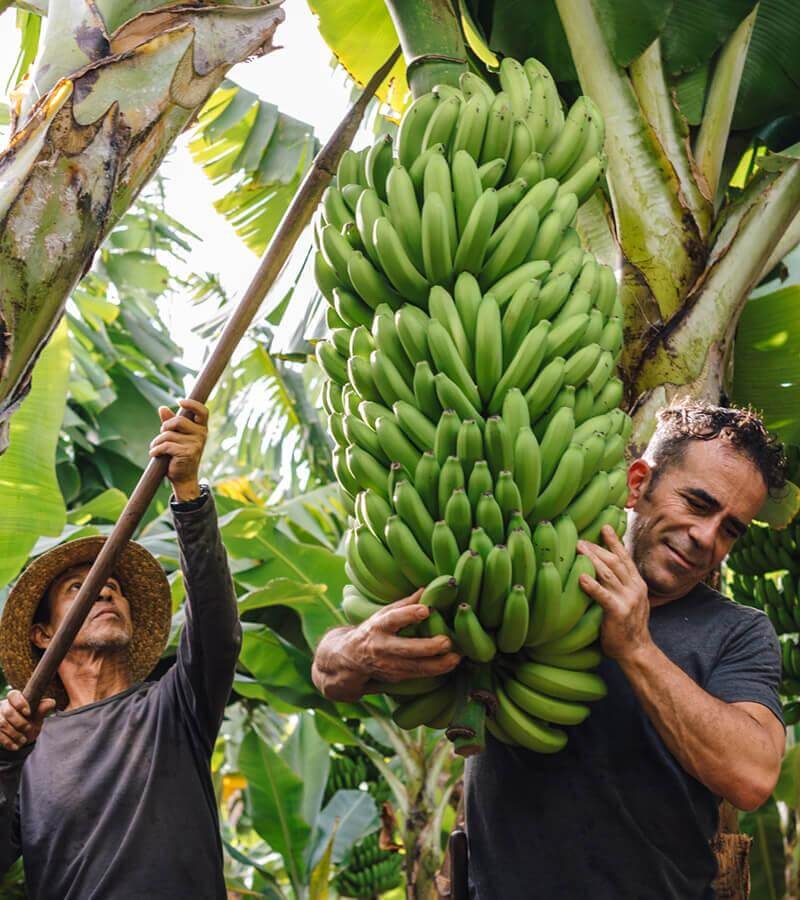The Canarian banana is the only banana in Europe to have the PGI (Protected Geographical Indication) seal. It is renowned throughout the world for its black specks and exceptional flavour and texture. This is only possible thanks to the good ripening conditions and the climate of the Canary Islands. The banana is also rich in potassium, magnesium and phosphorus, making it an extremely healthy foodstuff.
Wholesome as well as delicious
The Canarian banana is distinctive for its intense aroma, unmistakeable black specks visible in the riper parts and very sweet flavour. And it is juicier than its American counterpart, because of its higher humidity.
According to doctor Lluís Serra, professor of Preventive Medicine and Public Health at the University of Las Palmas de Gran Canaria, “many people wonder how many calories a banana contains and actually, it is not as many as we might think. The presence of fats in the banana is practically zero and it contains no cholesterol”.
This fruit’s composition in terms of sugars, fibre and vitamins depends on how ripe it is. Which is why the professor adds that eating it when it is at the perfect degree of ripeness is also beneficial for people with a tendency towards obesity and diabetes. According to a study by Harvard University, eating medium-ripe bananas can help prevent diseases.
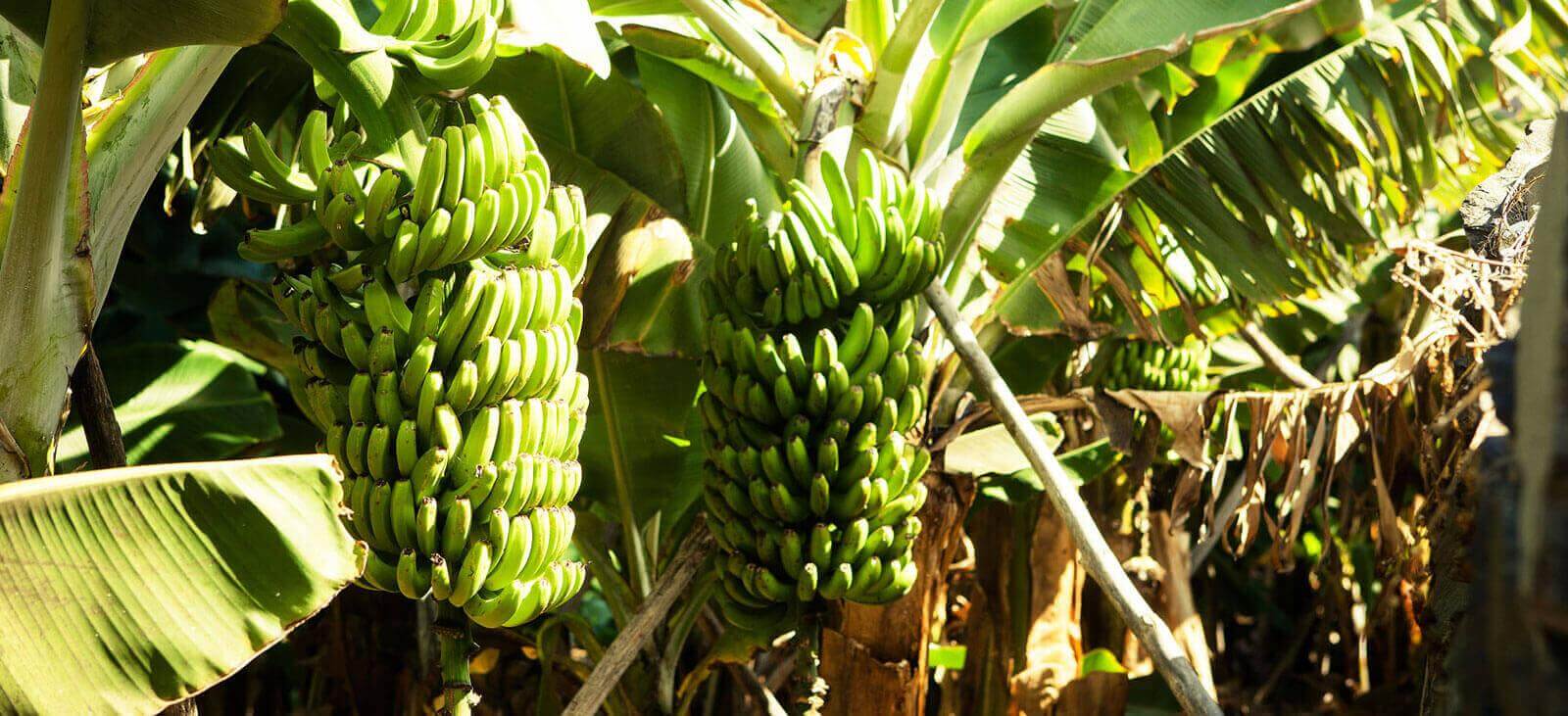
What makes it different?
Although the first banana plants came to the archipelago in the 15th century, it was not until 1880 that the English promoted their cultivation in order to export the fruit to the United Kingdom on the steam ships that stopped over in the ports of Santa Cruz de Tenerife and Las Palmas. This was when the variety that is best adapted to the climate and soil of the Canary Islands was developed: the Pequeña enana.
The most significant differential characteristics of the Canarian banana are its low starch content and the presence of a high level of sugar. Moreover, since the fruit ripens for around six months on the Canary Islands’ archipelago (three more than American bananas), its flavour and aroma are more intense.
Without a doubt, the Canarian banana is a symbol of the archipelago’s identity - a product that is healthy, natural and delicious to boot.
A demanding crop
Cultivation of the Canarian banana is subject to the health and environmental control standards of the European Union. Banana trees are very leafy plants but they only produce a single large bunch of bananas. After producing the fruit, they die and are cut down to give life to another plant. “Pups” grow at the base of the banana tree, but the farmer can only leave one, so they are cut away with a sharpened iron rod, the barreta.
At present, however, the plants are obtained using in vitro cultivation and nurseries supply banana trees when farmers need them.
The best water and good fertilizer
Banana trees need an abundance of quality water and good fertilizer, and are nourished with manure obtained from livestock. The use of this natural fertilizer has enhanced the preservation of an endangered autochthonous sheep breed - the oveja canaria de pelo or pelibüey sheep.



